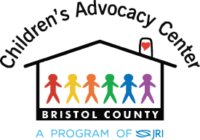Common Sexual-Exploration Behaviors
- Showing, touching and exploring private parts (in public and in private)
- Trying to touch mother’s or women’s breast
- Wanting to be naked
- Attempting to see other’s naked
- Asking questions about their body and/or other people’s body
- Asking question about bodily functions
- Having little sense of shame and/or privacy
Teaching Healthy Sexual Development
- Teaching the correct name for body parts and genitals (example: penis and vagina)
- Teach children basic information about the difference between male and female body parts
- Provide simple answers to questions about the body and bodily functions
- Teaching appropriate personal boundaries including: keeping private parts covered, not touching other’s private parts
Teaching Body Safety
- Teaching the difference between “safe” touches which are touches that are pleasant, comforting and welcomed and “unsafe” touches which are uncomfortable and unwanted
- Teaching children that their body belongs to them and it is okay to say “no” to being touched by anyone (even adults whom they love and trust)
- Teaching children what a “secret” is and that it is not okay to keep secrets from mom and dad.
- Teaching that it is okay to say “no” when anyone (even adults) ask them to do things that are wrong like touching private parts or keeping secrets from mom and dad
- Teaching children who they should tell if someone asks them to do not okay or unsafe things (parents, teachers, police, or another trusted adult)
- Taking the opportunity to explain who can see/touch their privates and when. For example, while giving a child a bath, explain to them that it is ok for a caregiver to see and/or touch their privates when cleaning them but normally it is not ok for others to see and/or touch them. Also explain that even if it is someone who is allowed to see or touch their private parts, ever hurts them, they need to tell them to stop and tell an adult.
REMEMBER:
YOU
are the first line of defense in protecting your child from sexual abuse
